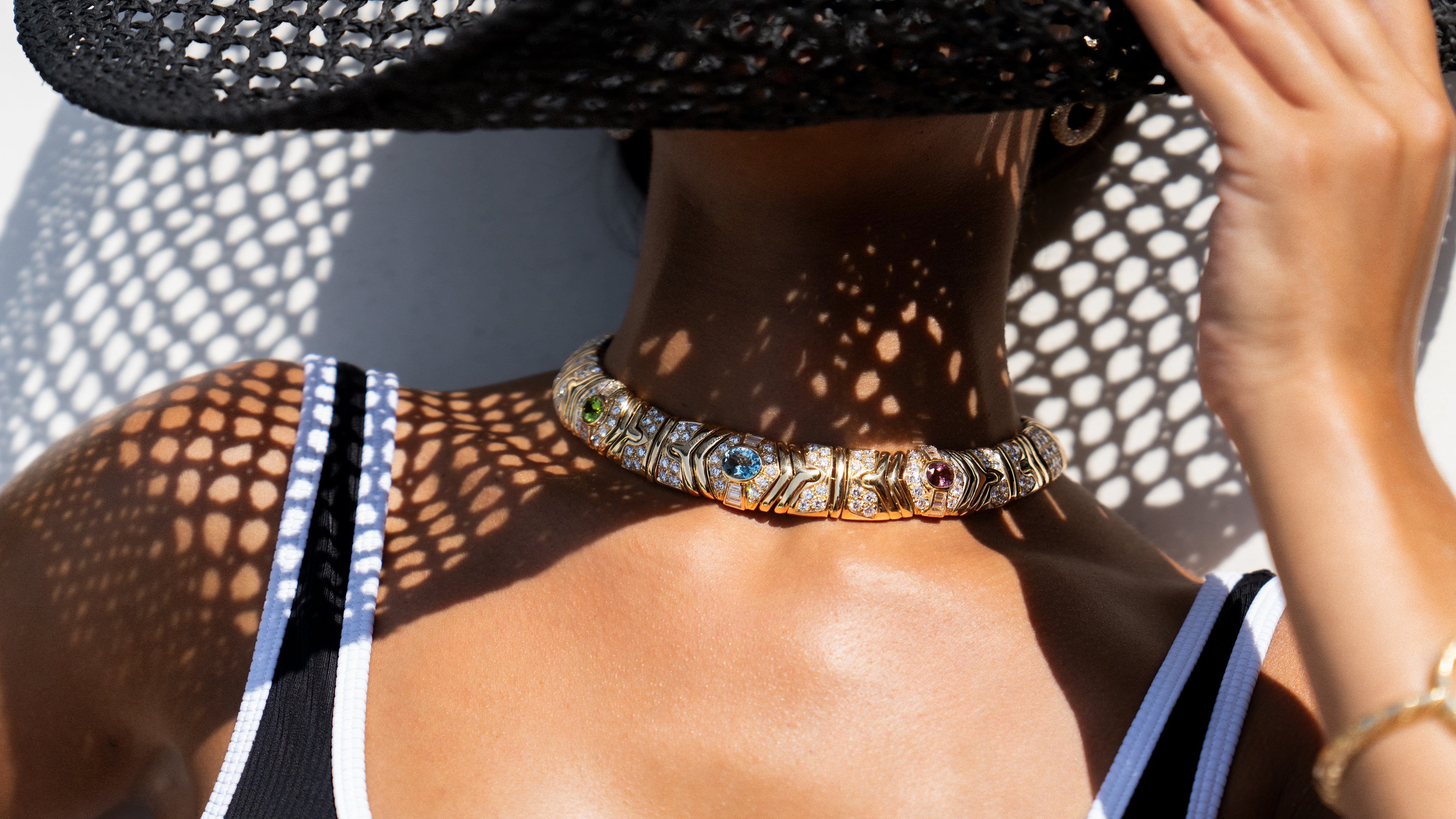Marie Zimmermann
A prolific artist who pushed the boundaries of design in a variety of media, from jewelry to monuments to objets d’art, Marie Zimmermann was a multi-talented but much-overlooked creator whose work encompassed the Arts & Crafts Movement and the Art Deco Era.
I am just a craftswoman who, as a friend of mine once said, makes everything from tiaras to tombstones – Marie Zimmerman
A Good Start
Zimmermann’s father imported straw for hats, and her mother was a Brooklyn, New York, society maven. Together they gave Marie and her siblings a secure and loving foundation.
Marie, born in 1879, was able to pursue her talents at an early age. Her studies began when she was 10, at the Packer College Institute. There Marie took art classes and thrived in the creative environment. At 18, she attended the Art Students League, and later enrolled at the Pratt Institute. Over time, Marie would learn drawing, painting, metalwork, and wax modeling. At Pratt, she also learned enameling, repousse, and how to design jewels that she would model into wax and work into gold, silver, or copper. She also experimented with semi-precious gemstones to create unique effects.

An Artist at Work
Zimmermann made the most of the relationships she developed. Riccardo Bertelli, a Brooklyn craftsman who established the Roman Bronze Works, helped Zimmermann by casting a sizeable number of her pieces using the lost wax method.
Another notable collaboration was with blacksmith Arthur D. Brown, who forged Zimmermann’s iron pieces. Marie was fascinated with what she called Venetian iron, a thinner and more malleable material than regular iron. Zimmermann was able to take what was considered a base metal and turn it into light, whimsical pieces.
“I am the brains and they are the hands,” Zimmermann quipped.
In 1901, Zimmermann joined the National Arts Club, where she opened a studio in 1910 and exhibited her work. Marie’s space, furnished with pieces she designed, was featured in a 1916 article for Good Furniture Magazine. Her studio was described as having “all sorts of precious things designed for ladies’ gowns and costumes…shoulder straps of pearls and sapphires mounted in carved antique gold, embellished with the most indescribable patinas of color; lovely necklaces where antique jade ornaments were used together with modern metal work modeled, cast, carved and chiseled into the most fantastic forms of dragons, butterflies…and even myriads of bats.” The magazine cited the influence of Far Eastern Art, from the late Gothic Period and the early Italian Renaissance.
The 1920s saw the creation of many jeweled objects, such as daggers, whimsical cigarette holders and cases and other accessories.

Zimmermann Style
The earliest expression for Zimmermann’s art was her jewelry. It was also the most enduring, as she continued to create jewels during the course of her entire career.
Marie was strongly influenced by the wave of ancient Egyptian artifacts made famous by significant excavations at the dawn of the 20th Century. The artifacts were displayed at the Metropolitan Museum of Art, where it’s likely Zimmermann first saw them in person. In 1922, the discovery of King Tutankhamun’s tomb would create yet another wave of desire for all things Egyptian. Other influences came from classical Japanese and ancient Chinese art and artifacts.
The Great Depression was a challenging time for even the most successful jewelers. Zimmermann kept her head afloat by taking on memorial projects, such as a Gothic-style shrine she created for Rudolf A. Metz and a bronze tree plus two markers for Leopold Fredrick. She also adapted to changing circumstances by silver-plating a service for a wealthy family with a reduced staff - no need to polish the silver. She added a sticker that stated, “Veiled in Rhodium, by Marie Zimmermann.”
Some jewelry was still produced during this time, most of it commissioned with gemstones supplied by her clients. Zimmermann also took a cue from Cartier, creating flexible choker necklaces in the “Tutti-Frutti” style.

Zimmermann Materials
Gold, silver, bronze, iron, and copper were all employed in Marie’s work. She loved to experiment with different metals, pushing them to their limit to create the most exquisite works of art.
Zimmermann created intricate jeweled designs using semi-precious gemstones, gold, and skillful enameling. A unique effect was created with flat intaglio-cut stones, which were popular at the turn of the Century.
Several unique, non-traditional engagement rings were designed by Zimmermann at the request of her clients. One such was an impressive indicolite tourmaline that featured an enameled lotus and leaf setting.
Overall, Zimmermann’s work was opulent and unique and quite spectacular. It is also, sadly, sporadic, because she did not mass-produce her creations. Luckily, her pieces can be viewed in such august institutions as the Metropolitan Museum of Art, Museum of Fine Arts-Boston, and the Art Institute of Chicago.
Early Retirement
Following an unsuccessful exhibition in 1939, Zimmermann made the decision to retire. For the next 33 years, she would take up gardening, renew her interest in hunting, and become an avid reader. Marie Zimmermann passed away in 1972.

This & That
Zimmermann was commissioned to create memorial doors for the mausoleum that housed the remains of A. Montgomery Ward and his business partner, George R. Thorne. Their final resting place was in Rosehill Cemetery in Chicago in 1926.
One of Marie’s most notable Egyptian revival pieces was a gold ring clearly influenced by the bracelets discovered on Tutankhamun’s arms. The ring featured a beryl scarab in a bezel setting; a trio of green and blue enamel lines were bisected by a trio of red lines, also in enamel, calling to mind lotus stems and papyrus reeds. These two motifs were often used in Egyptian artifacts.
In 1916, the New York Evening Sun printed an article about Zimmermann entitled: “This Being a Feminist Age, the Village Smith is a Studio and the Smith a Comely Young Woman: Her Apron is Blue Gingham, Her Forge a Gas Flame and Her Hammers and Tongs are Small and Bright.”
Browse our Marie Zimmerman Collection

